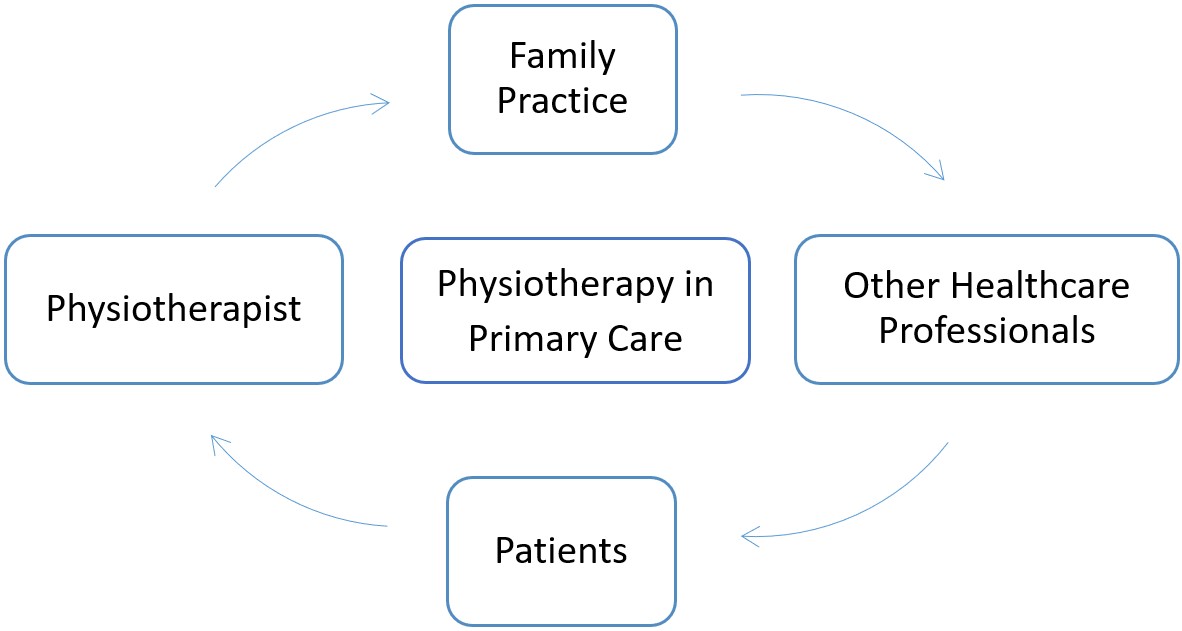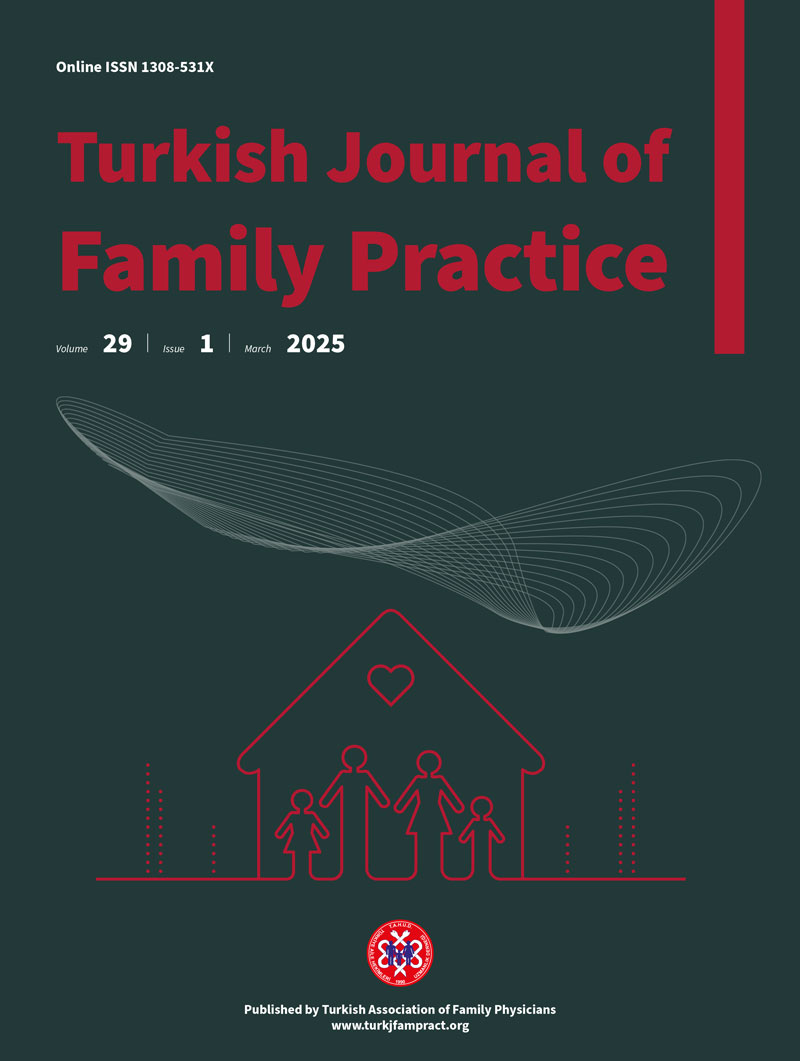Introduction
Dear Editor,
It is an undeniable fact that we are an increasingly aging society. The aging population and sedentary lifestyle are associated with the more frequent occurrence of musculoskeletal problems, which further increase the demand for healthcare. Meeting the increasing demand for health services results in various difficulties in the provision of health services.[1] This increasing demand has led to the emergence of integrated rehabilitation activities and innovative rehabilitation approaches, which offer significant opportunities to meet the healthcare needs of the global population.[2] One of these innovative approaches is the provision of physiotherapy services in primary care.
Primary healthcare refers to the first contact of the patients with health professionals. In primary care, clinicians aim to provide integrated and accessible health services. The basis of primary care services is to reduce patient referrals to secondary and tertiary care. In order to achieve this goal, it is necessary to increase the accessibility of inclusive health services, and one of the efforts towards this is to increase the employment of non-physician health professionals in primary care. A feasibility study was also conducted on the employment of physiotherapists in primary care in our country. This study emphasized that primary care physiotherapy can provide protection from chronic diseases and support the treatment process.[3] Primary care physiotherapy is becoming increasingly important in the world. This model has achieved successful results in Italy, i.e., it helps to prevent the exacerbation of chronic conditions. There is evidence that it meets the health needs of individuals by providing rehabilitation opportunities in non-hospital environments.[4] Current evidence shows that individuals with musculoskeletal problems, in particular, prefer primary healthcare professionals, including general practitioners and physiotherapists, as their first point of contact. Biopsychosocial assessment and treatment methods practiced in primary care contribute to both reducing healthcare costs and improving people’s quality of life.[5]
To implement global primary care physiotherapy services in our country, the employment of physiotherapists in this field should be increased. With the transition from traditional physiotherapy to extended-scope physiotherapy in the last 20 years, various countries (such as the United Kingdom, Canada, and Australia) have experienced significant progress in this regard. These new roles of physiotherapists have been considered an important initiative for public health development.[6-8] Thus, the dissemination of this model in our country may be beneficial in providing better healthcare. This situation can both reduce the density in hospitals and enable individuals in need of physiotherapy to receive more timely and cost-effective treatment at a place closest to them.
The treatment strategies applied by physiotherapists aim to (a) increase joint range of motion, (b) increase muscle strength and endurance, (c) increase stability, (d) reduce inflammation, and (e) reduce pain. To achieve these goals, physiotherapists implement personalized therapeutic exercise programs. Thermal modalities and electrotherapy agents can also be used when necessary. Health education can also be provided as part of the treatment to maximize and sustain the benefits to be obtained.[9] All these interventions can be carried out in primary care with appropriate planning.
Physiotherapists working in primary care play an important role in the management of individuals with chronic diseases. They also play a critical role in directing more complicated patients to interdisciplinary care.[10] Considering all these, there is a need for initiatives to improve public health through establishing healthy communication among family physicians, physiotherapists, other health professionals, and the patient (Figure 1). These initiatives will contribute to the development of primary care physiotherapy and will enable more people to meet their physiotherapy needs in a shorter time.
Source of funding
The authors declare the study received no funding.
Conflict of interest
The authors declare that there is no conflict of interest.
References
- Stynes S, Jordan KP, Hill JC, et al. Evaluation of the First Contact Physiotherapy (FCP) model of primary care: patient characteristics and outcomes. Physiotherapy. 2021;113:199-208. https://doi.org/10.1016/j.physio.2021.08.002
- Gimigliano F, Negrini S. The World Health Organization "Rehabilitation 2030: a call for action". Eur J Phys Rehabil Med. 2017;53(2):155-168. https://doi.org/10.23736/S1973-9087.17.04746-3
- Timurtaş E, Avcı EE, Demirbüken İ, et al. Physiotherapist employment in primary health care: Feasibility research in İstanbul province. Sağlık Akademisyenleri Dergisi. 2021;8(1):8-13.
- Da Ros A, Paci M, Buonandi E, Rosiello L, Moretti S, Barchielli C. Physiotherapy as part of primary health care, Italy. Bull World Health Organ. 2022;100(11):669-675. https://doi.org/10.2471/BLT.22.288339
- Boyle EM, Evans K, Coates S, et al. Patient experiences of referral practices and primary care physiotherapy for chronic nonspecific low back pain. Physiother Theory Pract. 2024;40(6):1326-1342. https://doi.org/10.1080/09593985.2022.2141599
- Desjardins-Charbonneau A, Roy JS, Thibault J, Ciccone VT, Desmeules F. Acceptability of physiotherapists as primary care practitioners and advanced practice physiotherapists for care of patients with musculoskeletal disorders: a survey of a university community within the province of Quebec. BMC Musculoskelet Disord. 2016;17(1):400. https://doi.org/10.1186/s12891-016-1256-8
- McPherson K, Kersten P, George S, et al. A systematic review of evidence about extended roles for allied health professionals. J Health Serv Res Policy. 2006;11(4):240-247. https://doi.org/10.1258/135581906778476544
- Bastiaens F, Barten DJ, Veenhof C. Identifying goals, roles and tasks of extended scope physiotherapy in Dutch primary care- an exploratory, qualitative multi-step study. BMC Health Serv Res. 2021;21(1):19. https://doi.org/10.1186/s12913-020-05986-w
- Gallardo Vidal MI, Calleja Delgado L, Tenezaca Marcatoma JC, Calleja Guadix I, Daimiel Yllera A, Morales Tejera D. Physiotherapy and health education protocol in chronic musculoskeletal shoulder pain. Experience in Primary Care. Aten Primaria. 2022;54(5):102284. https://doi.org/10.1016/j.aprim.2022.102284
- van Dijk H, Köke AJ, Elbers S, Mollema J, Smeets RJ, Wittink H. Physiotherapists Using the Biopsychosocial Model for Chronic Pain: Barriers and Facilitators-A Scoping Review. Int J Environ Res Public Health. 2023;20(2):1634. https://doi.org/10.3390/ijerph20021634
Copyright and license
Copyright © 2025 The Author(s). This is an open access article distributed under the Creative Commons Attribution License (CC BY), which permits unrestricted use, distribution, and reproduction in any medium or format, provided the original work is properly cited.











